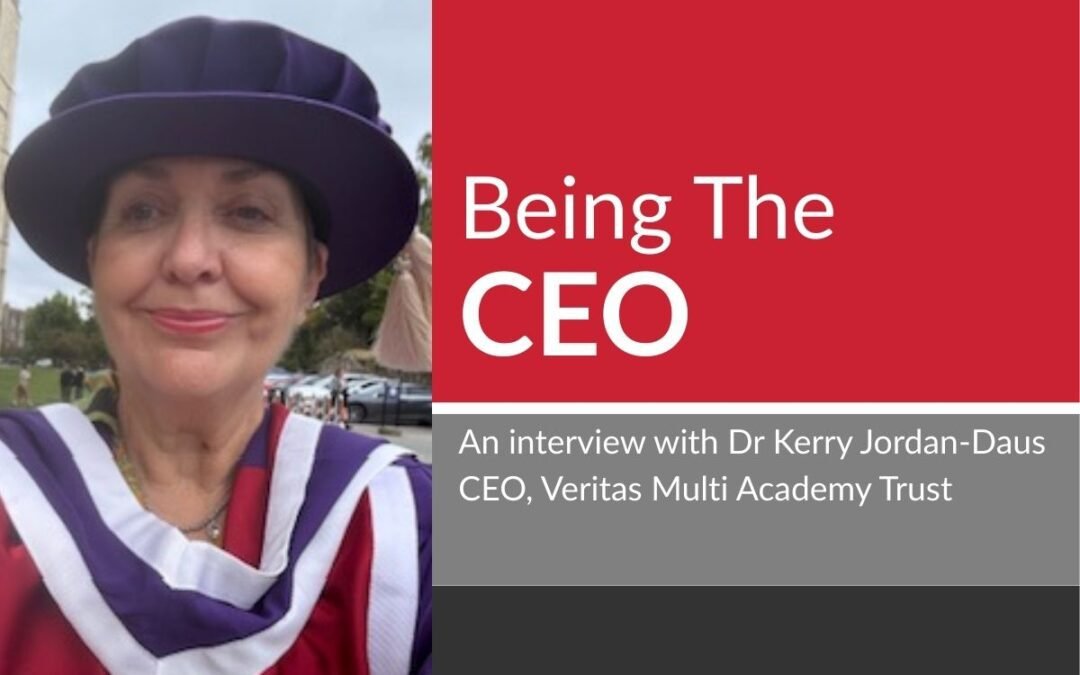The third meeting of Forum Strategy’s #TrustLeaders strategic group on remote learning and working took place on 28 June. The session was chaired by Kath Kelly (CEO of Lionheart Academies Trust), with contributions from Alice Gregson (COO, Forum Strategy), David Morris (CEO, HEART Academies Trust), Sarah Gibson (Director, CooperGibson), and Caroline Allams, (Co-Founder of Natterhub) The group is one of three currently looking at key strategic issues for CEOs.
Kath Kelly began the session, and set the scene by reflecting on the fact that, while schools are mostly back to full capacity and to more usual ways of operating again, we are still seeing many instances of disruption due to Covid-19. A significant number of students and staff have needed to self-isolate in many schools across the country, especially in recent weeks, with the rise of the Delta variant, and because of this remote learning continues to be a crucial element of education provision. However, remote learning and working will continue to be crucial for other reasons, particularly in light of changing expectations of younger staff and the rise of flexible working across workplaces which has been accelerated by the pandemic. The first input of the session – from Alice Gregson, COO at Forum Strategy – built on Kath’s point around the rise in expectations around flexible working throughout the employment market, and Alice explained why flexibility needs to stay a priority, and how this might apply to academy trusts. Alice shared statistics released by the Institute of Employment Studies earlier this month, suggesting that the jobs market is showing strong signs of recovery. While this is of course fantastic news, it also means it will be even more important that academy trusts do not become complacent, but stay competitive, relevant and attractive as employers.
Research shows that employees – and Gen-Z in particular – value flexible working, remote working opportunities, and well-being more than ever post pandemic; therefore, having greater flexibility built into working hours, patterns and locations is likely to become increasingly integral for retention and attraction now and in the future. While recognising the contextual challenge for education, building in flexibility is certainly not impossible. Alice challenged colleagues to consider what aspects of more flexible working may be possible moving forward, and to consider how flexibility may be provided for employees in ways that may not be immediately straightforward or obvious.
‘As another rise in cases amongst pupils means that many schools are yet again providing remote learning to pupils who are self-isolating, it is vital that remote learning and working remains a priority.’
The group was then joined by David Morris, CEO of HEART Academies trust in Bedfordshire, who discussed the recent challenges of Covid-19 outbreaks in schools within the trust, caused by a spike in infections in the local area as a result of the Kent, and subsequently the Delta, variant. The rapid infection rate of the Delta variant recently led to the temporary closure of one of the schools in the trust, and with that, a return to remote working. The trust had to respond extremely quickly, but fortunately, due to measures put in place in the trust during the previous lockdowns, remote learning was able to resume as smoothly as possible. Every student had access to the IT needed to engage in remote learning, with over 600 laptops having already been provided to those without a device. A robust remote learning policy was also firmly in place for staff to work from, as well as a trust-wide strategy group for remote learning. David’s input served as a reminder that the pandemic is far from over, and that remote learning and working continues to be a key component of educational provision for academy trusts. As another rise in cases amongst pupils means that many schools are yet again providing remote learning to pupils who are self-isolating, it is vital that remote learning and working remains a priority.
Sarah Gibson, Director of CooperGibson Research, then joined the group to share the key findings of research conducted by CooperGibson for the DfE in 2018/19 on flexible working within schools, subsequently outlined in the report ‘Exploring flexible working practice in schools’ (link: Exploring flexible working practice in schools – GOV.UK (www.gov.uk)). The research was based on an online survey of nearly 3000 respondents – including teachers, middle leaders and senior leaders, and across a wide-range of different sizes and types of schools – to find out about flexible working practices within the sector. There were also in-depth interviews which followed on from the survey, with 25 teachers/middle leaders, and 25 headteachers taking part, in order to further understand what was – or wasn’t – working within the sector in terms of flexible working arrangements. The interviews particularly focused on the contextual issues around flexible working (what works in certain environments and within certain schools), how flexible working can be facilitated, the different perceptions of flexible working from different stakeholders, what support is currently in place in schools for those who wish to work flexibly, and what could be improved.
‘89% of teachers surveyed who worked flexibly believed that flexible working improved their work life balance and 85% said it improved their wellbeing’
Sarah went on to unpick highlights from the report, beginning with different school’s policies around flexible working. The research found that most senior leaders reported that a formal flexible working policy/procedure was in place in their school; however, interviewees generally felt that awareness of these policies amongst teaching staff was limited – despite 95% of senior leaders believing that the policy was easily accessible to all staff. This discrepancy shows how important clear communication of flexible working policies is, demonstrating that senior leaders need to pay careful attention to how they ensure that clear communication channels are established in this area. Sarah then described the flexible working practices which were found to be in place in schools through CooperGibson’s research. The most common forms of flexible working reported were part-time hours, personal/family days and job sharing. Other types included phased retirement, home and remote working, flexi-time and sabbaticals. Unsurprisingly, leaders generally felt that non-teaching and support roles could more easily accommodate flexible working than teaching roles.
At the time of the research only around 30% of senior leaders said they would consider implementing home/remote learning for some staff, due to a widespread perception of flexible working being incompatible with the teaching profession, and concerns being raised particularly around lack of consistency and continuity in the classroom. However, perceptions are likely to have changed over the past 18 months, and the percentage of senior leaders who would consider flexible working may have increased since the pandemic. Interestingly, 89% of teachers surveyed who worked flexibly believed that flexible working improved their work life balance and 85% said it improved their wellbeing. Despite their apprehension, senior leaders also generally felt that flexible working opportunities had some real benefits, including improved staff morale and wellbeing, attracting a wider range and higher quality of recruits, and better retention of staff.
‘Schools and trusts should look into ways to communicate with parents and pupils around flexible working, explaining how consistency will be achieved in the classroom, and how communication channels will operate with teachers who work flexibly, to alleviate any concerns.’
Finally, Sarah shared reflections and tips for trusts looking to implement flexible working more widely. These included making flexible working policies clear via discussions in staff meetings and in performance management meetings; clearly communicating with staff about how to make timely flexible working requests; and addressing current cultures within your schools, aiming to make them more conducive to flexible working. Schools and trusts should also look into ways to communicate with parents and pupils around flexible working, explaining how consistency will be achieved in the classroom, and how communication channels will operate with teachers who work flexibly, to alleviate any concerns. Job share policies are also key, so that clear systems and arrangements are in place to help to ensure that they work effectively in practice.
The final input of the session came from Caroline Allans, co-founder of Natterhub, who spoke to the group about the importance of creating a trust wide approach to develop pupils’ digital and online resilience, skills and safety. Technology has pervaded almost every aspect of children’s lives over the past year, but there is all too often a disconnect between the urgent support children need in navigating the online world, and the support they actually receive in this area. Many children are exploring the internet almost completely unaided and without structured guidance, and according to research from Natterhub – in conjunction with Twinkle – 48% of teachers in primary school said they rarely, if ever, taught about online safety.
‘Young people are being asked to spend more time on screens than ever before, and often without a clear, impactful code of conduct, or tangible guidance around this abstract space.’
The implications of this cannot be underestimated. There is a growing discord between what adults perceive that their children are doing online, and what’s actually happening when children are alone with their screens. Young people are being asked to spend more time on screens than ever before, and often without a clear, impactful code of conduct, or tangible guidance around this abstract space. And as a result, the statistics around online vulnerability have soared since the pandemic, with a rise in children accessing inappropriate content, experiencing cyber-bullying, and even grooming and sexual abuse. On top of this, the mental health issues which are increasingly affecting young people are often exacerbated through their access to unhelpful online content.
According to Caroline, it is clear that we’ve reached the tipping point where the prevalence of the problem has got to impact the positioning of the subject within schools. It is also no longer enough for children to be simply safe online – children also have a right to thrive in this space, because, realistically, this is where they are now spending so much of their childhoods. Parents on average do not allow their children to play outside unattended until they are 11 years old (a jump of two years in a generation), and yet 50% of children aged 10-11 have a device in their bedroom overnight, with all that that entails.
‘It is clear that we’ve reached the tipping point where the prevalence of the problem has got to impact the positioning of the subject within schools.’
However, Caroline emphasised that the situation is not all doom and gloom. There are some great positives to being online of course, and this has been especially evident during the pandemic. But it is crucial that online safety is now prioritised in the curriculum in a way that is experiential and engaging for pupils, and in a way that resonates with what children experience outside of school. Social media platforms will continue to rapidly evolve, and young people need to be taught critical thinking skills which will enable them to be open-minded and respectful to others online. They also need to be taught the digital resilience to bounce back when they stumble across the inevitable downsides of the online world.
The online interactions of children and young people matter deeply; as they embark on their digital journey they initiate their digital persona, and begin to form their long-term screen habits. And whatever they see on the screen will influence their perceptions of what is normal and expected behaviour as they develop. This is why it is essential that schools and trusts find ways to support young people urgently as they begin to navigate the digital and online world. To find out more about young people’s experiences of the online world, and to find out more about how your trust can help to support them in this space, you can read Natterhub’s report here: Natterhub
Read previous summaries of this CEO Strategy Group’s meetings
CEO Strategy Group 2 -Remote learning and working (Meeting 1)
CEO Strategy Group 2 -Remote learning and working (Meeting 2)
Find out more about the two other current CEO Strategy Groups here:
- CEO Strategy Group 3 – Environmental Sustainability | Forum Strategy
- CEO Strategy Group 1 – Staff and pupil wellbeing


